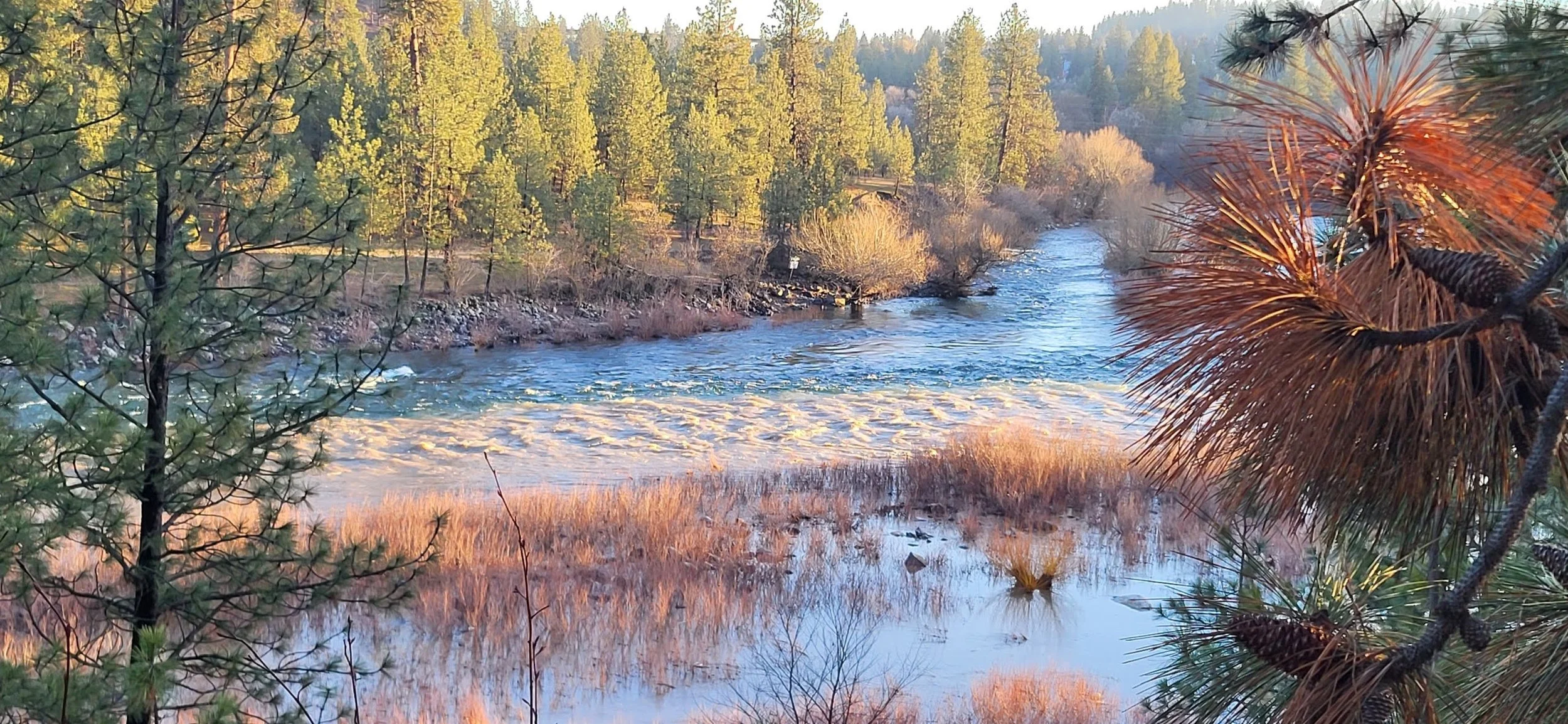Washington Department of Ecology released its draft 2022 Water Quality Assessment, indicating that it will list the Spokane River as impaired by sediment pollution from the Hangman Creek Basin. This draft listing is based on data collected by Spokane Riverkeeper’s volunteer scientists! For the first time, data submitted by Spokane Riverkeeper played a crucial role in Ecology’s assessment, setting a powerful example of how community efforts can drive meaningful environmental action.
What is a Water Quality Assessment and 303(d) List?
The Water Quality Assessment and 303(d) list are important for informing policy and response to large-scale pollution in the basin. The Clean Water Act requires that states complete water quality assessments every 2 years to track progress and assess impairments on our waterways. Through this process, the Department of Ecology gathers data and assesses the water quality of surface water in the state.
The process relies on public data submissions that are analyzed by the department to ensure it is usable quality. When approved water quality data indicates that a water body violates the state standard for a particular pollutant, the water body will be listed as impaired and placed on the 303(d) list for future clean up. After a water body is listed as impaired, the Clean Water Act requires the Department of Ecology to create a clean up plan, like a TMDL, to address the impairment.
The 2022 draft assessment has 1,141 new category 5 listings, only one on the Spokane River. The Spokane River basin has category 5 previously been listed as impaired for pollution from heavy metals, PCBs, phosphorus, dissolved oxygen, and temperature, among other various standards. Many of these impairments are included in clean up plans that began to be implemented in the late 1990s. Some, like PCBs, have new clean up plans that are still in the early stages.
Community Science as Part of the Process
From 2018 to 2022, and every winter since, Spokane Riverkeeper’s Community Science Program has mobilized volunteers to collect water samples, studying how sediment from Hangman Creek impacts the Spokane River. Samples were collected at four strategic locations, including above and below the confluence of Hangman Creek and the river. In 2024, 13% of samples at TJ Meenach exceeded state standards and 50% of samples at Riverside Cemetery exceeded state standards. This data will be submitted to the next call for data in the spring of 2025.
Hangman Creek has some of the worst water quality in the state. But why does this happen? The source of Hangman Creek’s sediment issues is rooted in historical land use changes. Hangman Creek has highly erodible sediments but was once a meandering stream through bunchgrass prairie, ponderosa pine forest and a dense riparian vegetation of shrubs and trees. The creek has since been degraded by vegetation clearing for agriculture, rerouting, and straightening that has created an unstable bank with increasing stream velocity further eroding the bank. When heavy rain falls on empty agriculture fields in the winter, that rainwater runoff can easily pick up large quantities of sediment.
Moving Forward Towards Restoration
While the challenges in addressing the sediment pollution are substantial, progress is already being made to move the basin forward. The Washington Department of Ecology is actively working to restore the Hangman Creek basin, one of the Spokane River’s critical tributaries, through targeted conservation measures. Following settlement of Spokane Riverkeeper’s 2018 Clean Water Act lawsuit, Ecology has implemented riparian buffers on 95 sites within the basin, as highlighted in their 2024 annual report on the settlement. These buffers, consisting of native plants and vegetation along the creek's banks, are essential for stabilizing soils, filtering pollutants, and cooling the water—critical steps toward improving water quality in both Hangman Creek and the Spokane River. Over time, these measures will make a difference in addressing the erosion and runoff issues at the heart of this sediment pollution listing.
The new sediment impairment listing is more than a regulatory milestone; it’s a roadmap for action. Spokane Riverkeeper plans to use this listing, along with data from its Community Science Program, to advocate for stronger policies and regulations that address land use practices contributing to sediment pollution.
Though this listing is still just in draft form, it is an important milestone for our community and river. This listing also highlights the importance of community involvement in environmental stewardship. The Spokane Riverkeeper Community Science Program not only provides valuable data but also connects volunteers with the river, fostering a deeper understanding of and commitment to its protection. Training for the next round of the study will begin in December, and we hope you will join us.
If you would like to support the final listing of the Spokane River as impaired by sediment pollution, you can submit your own comments of support here. Not sure what to write? Use our template as a starting point to support of this important listing!




